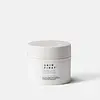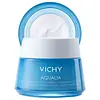What's inside
What's inside
 Key Ingredients
Key Ingredients

 Benefits
Benefits

 Concerns
Concerns

 Ingredients Side-by-side
Ingredients Side-by-side

Water
Skin ConditioningGlycerin
HumectantMethyl Glucose Sesquistearate
EmollientHamamelis Virginiana Leaf Water
AstringentPanthenol
Skin ConditioningGlycol
HumectantSimmondsia Chinensis Seed Oil
EmollientPropylheptyl Caprylate
EmollientArctium Lappa Root Extract
Skin ConditioningFomes Officinalis Extract
Skin ProtectingCucumis Sativus Fruit Extract
EmollientOrbignya Oleifera Seed Oil
EmollientMacadamia Ternifolia Seed Oil
EmollientGlycoproteins
Skin ConditioningGlutamic Acid
HumectantButyrospermum Parkii Butter
Skin ConditioningCetyl Alcohol
EmollientSodium Hyaluronate
HumectantValine
MaskingThreonine
Tocopheryl Acetate
AntioxidantAluminum Starch Octenylsuccinate
AbsorbentAcrylates/C10-30 Alkyl Acrylate Crosspolymer
Emulsion StabilisingAllantoin
Skin ConditioningXanthan Gum
EmulsifyingLecithin
EmollientTocopherol
AntioxidantAscorbyl Palmitate
AntioxidantAmmonium Acryloyldimethyltaurate/Vp Copolymer
Phenoxyethanol
PreservativeEthylhexylglycerin
Skin ConditioningSodium Dehydroacetate
PreservativeSodium Metabisulfite
AntioxidantSodium Benzoate
MaskingPotassium Sorbate
PreservativeTetrasodium Glutamate Diacetate
Citric Acid
BufferingParfum
MaskingCI 42090
Cosmetic ColorantWater, Glycerin, Methyl Glucose Sesquistearate, Hamamelis Virginiana Leaf Water, Panthenol, Glycol, Simmondsia Chinensis Seed Oil, Propylheptyl Caprylate, Arctium Lappa Root Extract, Fomes Officinalis Extract, Cucumis Sativus Fruit Extract, Orbignya Oleifera Seed Oil, Macadamia Ternifolia Seed Oil, Glycoproteins, Glutamic Acid, Butyrospermum Parkii Butter, Cetyl Alcohol, Sodium Hyaluronate, Valine, Threonine, Tocopheryl Acetate, Aluminum Starch Octenylsuccinate, Acrylates/C10-30 Alkyl Acrylate Crosspolymer, Allantoin, Xanthan Gum, Lecithin, Tocopherol, Ascorbyl Palmitate, Ammonium Acryloyldimethyltaurate/Vp Copolymer, Phenoxyethanol, Ethylhexylglycerin, Sodium Dehydroacetate, Sodium Metabisulfite, Sodium Benzoate, Potassium Sorbate, Tetrasodium Glutamate Diacetate, Citric Acid, Parfum, CI 42090
Water
Skin ConditioningGlycerin
HumectantCaprylic/Capric Triglyceride
MaskingAlcohol Denat.
AntimicrobialPropanediol
SolventIsopropyl Palmitate
EmollientButyrospermum Parkii Butter
Skin ConditioningAmmonium Polyacryloyldimethyl Taurate
Emulsion StabilisingZea Mays Starch
AbsorbentMannose
HumectantP-Anisic Acid
MaskingSodium Hyaluronate
HumectantSodium Hydroxide
BufferingSodium PCA
HumectantAcrylates/C10-30 Alkyl Acrylate Crosspolymer
Emulsion StabilisingCaprylyl Glycol
EmollientCetearyl Alcohol
EmollientCetearyl Glucoside
EmulsifyingCitric Acid
BufferingGlyceryl Isostearate
EmollientWater, Glycerin, Caprylic/Capric Triglyceride, Alcohol Denat., Propanediol, Isopropyl Palmitate, Butyrospermum Parkii Butter, Ammonium Polyacryloyldimethyl Taurate, Zea Mays Starch, Mannose, P-Anisic Acid, Sodium Hyaluronate, Sodium Hydroxide, Sodium PCA, Acrylates/C10-30 Alkyl Acrylate Crosspolymer, Caprylyl Glycol, Cetearyl Alcohol, Cetearyl Glucoside, Citric Acid, Glyceryl Isostearate
Ingredients Explained
These ingredients are found in both products.
Ingredients higher up in an ingredient list are typically present in a larger amount.
Acrylates/C10-30 Alkyl Acrylate Crosspolymer is a synthetic polymer. It is used to thicken and improve the texture of products. Due to its properties, it can prevent water and oil ingredients from separating.
This ingredient is also known as shea butter. It is an effective skin hydrator and emollient.
Emollients help soothe and soften your skin. It does this by creating a protective film on your skin. This barrier helps trap moisture and keeps your skin hydrated. Emollients may be effective at treating dry or itchy skin.
Shea butter is rich in antioxidants. Antioxidants help fight free-radicals, or molecules that may harm the body. It is also full of fatty acids including stearic acid and linoleic acid. These acids help replenish the skin and keep skin moisturized.
While Shea Butter has an SPF rating of about 3-4, it is not a sunscreen replacement.
Shea butter may not be fungal acne safe. We recommend speaking with a professional if you have any concerns.
Learn more about Butyrospermum Parkii ButterCitric Acid is an alpha hydroxy acid (AHA) naturally found in citrus fruits like oranges, lemons, and limes.
Like other AHAs, citric acid can exfoliate skin by breaking down the bonds that hold dead skin cells together. This helps reveal smoother and brighter skin underneath.
However, this exfoliating effect only happens at high concentrations (20%) which can be hard to find in cosmetic products.
Due to this, citric acid is usually included in small amounts as a pH adjuster. This helps keep products slightly more acidic and compatible with skin's natural pH.
In skincare formulas, citric acid can:
While it can provide some skin benefits, research shows lactic acid and glycolic acid are generally more effective and less irritating exfoliants.
Most citric acid used in skincare today is made by fermenting sugars (usually from molasses). This synthetic version is identical to the natural citrus form but easier to stabilize and use in formulations.
Read more about some other popular AHA's here:
Learn more about Citric AcidGlycerin is already naturally found in your skin. It helps moisturize and protect your skin.
A study from 2016 found glycerin to be more effective as a humectant than AHAs and hyaluronic acid.
As a humectant, it helps the skin stay hydrated by pulling moisture to your skin. The low molecular weight of glycerin allows it to pull moisture into the deeper layers of your skin.
Hydrated skin improves your skin barrier; Your skin barrier helps protect against irritants and bacteria.
Glycerin has also been found to have antimicrobial and antiviral properties. Due to these properties, glycerin is often used in wound and burn treatments.
In cosmetics, glycerin is usually derived from plants such as soybean or palm. However, it can also be sourced from animals, such as tallow or animal fat.
This ingredient is organic, colorless, odorless, and non-toxic.
Glycerin is the name for this ingredient in American English. British English uses Glycerol/Glycerine.
Learn more about GlycerinSodium Hyaluronate is hyaluronic acid's salt form. It is commonly derived from the sodium salt of hyaluronic acid.
Like hyaluronic acid, it is great at holding water and acts as a humectant. This makes it a great skin hydrating ingredient.
Sodium Hyaluronate is naturally occurring in our bodies and is mostly found in eye fluid and joints.
These are some other common types of Hyaluronic Acid:
Learn more about Sodium HyaluronateWater. It's the most common cosmetic ingredient of all. You'll usually see it at the top of ingredient lists, meaning that it makes up the largest part of the product.
So why is it so popular? Water most often acts as a solvent - this means that it helps dissolve other ingredients into the formulation.
You'll also recognize water as that liquid we all need to stay alive. If you see this, drink a glass of water. Stay hydrated!
Learn more about Water